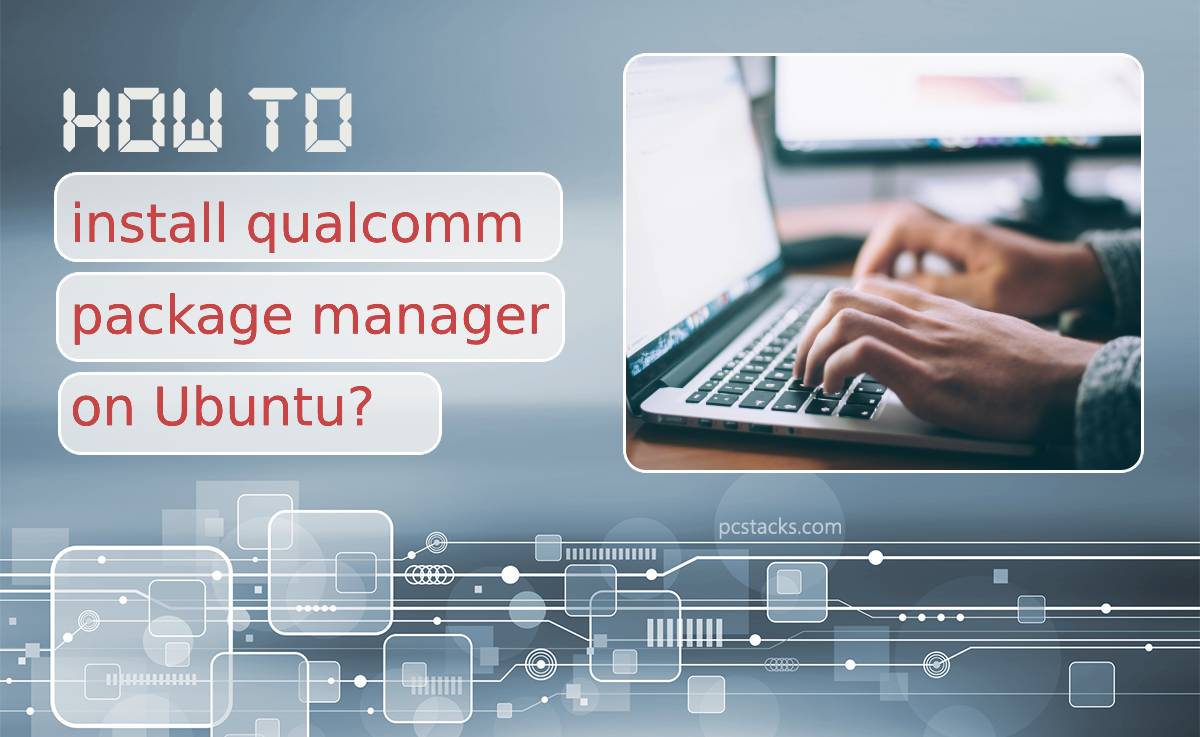In the world of Linux, where customization and flexibility reign supreme, Ubuntu stands out as a beloved choice for both newcomers and seasoned developers alike. However, if you’ve ever dabbled in mobile development or are looking to tap into the vast potential of Qualcomm’s technologies, you may have encountered a hurdle: installing the Qualcomm Package Manager (QPM) on your beloved Ubuntu system. This powerful tool opens doors to a treasure trove of functionalities tailored for Snapdragon chipset devices, making it essential for anyone keen on maximizing their development experience.
Imagine being able to seamlessly manage software packages specifically designed for Qualcomm hardware right from your Ubuntu environment! Whether you’re an enthusiast seeking to experiment with cutting-edge features or a developer aiming to optimize applications for mobile platforms, mastering QPM can elevate your projects significantly. In this article, we’ll walk you through the installation process step by step, unraveling any complexities along the way. Get ready to enhance your toolkit and explore new horizons in mobile development with easy-to-follow instructions that will have you up and running in no time!
Table of Contents
System Requirements for Installation
Before diving into the installation of the Qualcomm Package Manager on Ubuntu, it’s essential to understand the system requirements to ensure a smooth setup. Depending on your specific usage scenario or development needs, having an optimized environment can significantly enhance performance. Typically, a minimum of 4GB of RAM is recommended for basic operations, but upgrading to 8GB or more will provide a much more responsive experience when multitasking with various tools.
In addition to RAM, CPU power plays a crucial role in executing tasks effectively. A multi-core processor is highly advisable; this allows parallel processing and better handling of resource-intensive applications that may accompany package management activities. Furthermore, sufficient disk space—at least 10GB—is necessary not just for the Qualcomm Package Manager itself but also for any packages you intend to manage thereafter. By ensuring your system meets these foundational requirements, you set yourself up for success and pave the way for efficient software management on your Ubuntu setup.

Installing Required Dependencies
Before we dive into installing the Qualcomm Package Manager, it’s crucial to ensure that all necessary dependencies are set up correctly. This step might seem mundane, but it’s essential for a seamless installation process and optimal functionality of the software. Begin by updating your system with `sudo apt update` and `sudo apt upgrade`—a quick refresh ensures that you are working with the latest packages, minimizing conflicts down the line.
Next, identify specific libraries and tools required for compatibility with Qualcomm tools; this often includes packages like `libstdc++6`, `glibc`, or `gcc`. Installing these can be easily achieved through your terminal; simply run commands such as `sudo apt install libstdc++6` to fetch each dependency without hassle. Depending on your distribution version, some additional components may be needed, so checking documentation on supported versions is always a wise move. By proactively addressing these requirements before installation, you not only streamline the overall setup process but also build a robust foundation for future endeavors in application development or device management with Qualcomm technologies.
Downloading Qualcomm Package Manager
To successfully download the Qualcomm Package Manager, begin by ensuring your Ubuntu environment is properly set up to handle additional packages. Start by adding the necessary repositories if they’re not already included in your sources list; this often involves enabling the Universe repository. Once you’ve confirmed that, use a terminal to efficiently fetch the package manager with a simple command like `sudo apt-get install qualcomm-package-manager`. The beauty of using Ubuntu lies in its ability to manage dependencies automatically, significantly simplifying the installation process.
However, downloading is just one part of the equation. After installation, take some time to explore its features and capabilities that cater specifically to Qualcomm chipsets. This tool isn’t merely about managing libraries; it’s about unlocking full potential for development on various mobile devices powered by Qualcomm technology. With thorough documentation available online, users can dive into advanced functionalities such as integrating custom ROMs or managing system images—transforming their software development experience from mundane to empowering.

Installing Qualcomm Package Manager Steps
To install the Qualcomm Package Manager (QPM) on Ubuntu, you’ll want to start by ensuring your system is up-to-date. Open your terminal and run `sudo apt update` followed by `sudo apt upgrade`. This step is crucial as it minimizes potential conflicts during installation. Once your packages are current, you need to set up the required dependencies. Installing essential libraries such as libglib2.0-dev can avoid hiccups later in the process.
Next, download the latest version of QPM from Qualcomm’s official site or a trusted repository. Navigate to where you’ve saved the package using the terminal and use `dpkg -i package_name.deb` for installation. Should you encounter any dependency issues, resolving them with commands like `sudo apt –fix-broken install` is straightforward and effective. After successful installation, verify that everything is functioning properly by invoking QPM through your terminal and exploring its features—all ready for enhancing application management on your device!
Configuring the Package Manager Settings
Once you’ve installed the Qualcomm Package Manager on your Ubuntu system, the next step involves fine-tuning its settings for optimal performance tailored to your specific development needs. Start by exploring the configuration files located in the package manager’s directory; these files can dramatically influence how software packages are retrieved and managed. By adjusting parameters such as maximum download retries or cache sizes, you can enhance both speed and reliability, ensuring a seamless experience during package installations.
Additionally, consider setting up custom repositories within your configuration to broaden the range of available packages. This enables you to access specialized libraries or tools that might not be included in official repositories. A well-curated list of sources not only helps maintain current versions but also allows experimentation with cutting-edge frameworks that could benefit your project.
Don’t overlook security configurations either—ensuring that HTTPS is enabled for all communications between your device and external repositories is crucial for keeping potentially harmful binaries at bay. As you engage with these settings, you’ll create an environment that’s not just functional but also secure and efficient, ultimately leading to a more productive development process when working with Qualcomm hardware on Ubuntu.

Troubleshooting Common Installation Issues
When installing Qualcomm Package Manager on Ubuntu, users may encounter a variety of common issues that can halt progress and lead to frustration. One such obstacle is dependency conflicts, particularly if other software or libraries are already installed. To tackle this, leveraging the `apt-get` command with flags like `-f` can automatically identify and resolve broken dependencies. It’s not just about fixing; sometimes uninstalling older versions or conflicting packages might be necessary for smooth installation.
Another frequent hiccup arises from inadequate permissions during installation. If you find yourself facing permission errors, running the installation command using `sudo` typically does the trick. However, it’s essential to ensure your user has the right privileges to avoid future roadblocks in system-wide changes. Lastly, checking system compatibility cannot be overstated—reviewing both hardware requirements and ensuring your Ubuntu version aligns with Qualcomm’s specifications can save a lot of headaches down the line. Following these steps not only facilitates a smoother installation but enhances overall user experience as well.
Conclusion: Final Thoughts on Installation Process
Successfully installing the Qualcomm Package Manager on Ubuntu is a rewarding endeavor that opens up a plethora of possibilities for developers and tech enthusiasts alike. This process not only enhances your system’s capabilities but also fosters a deeper understanding of package management intricacies. With each step, you gain insight into how software interacts with your operating system, empowering you to troubleshoot and customize applications effectively.
As you wrap up your installation, remember that the learning doesn’t stop here. Engaging with the community around Qualcomm tools can provide ongoing support and inspiration for innovative projects. Whether you’re diving into device programming or exploring new software packages, sharing experiences or seeking advice can enrich your journey. Ultimately, embracing this technical challenge equips you with valuable skills that extend far beyond just installing software—it’s about growing as a competent user within the rapidly evolving landscape of technology.




